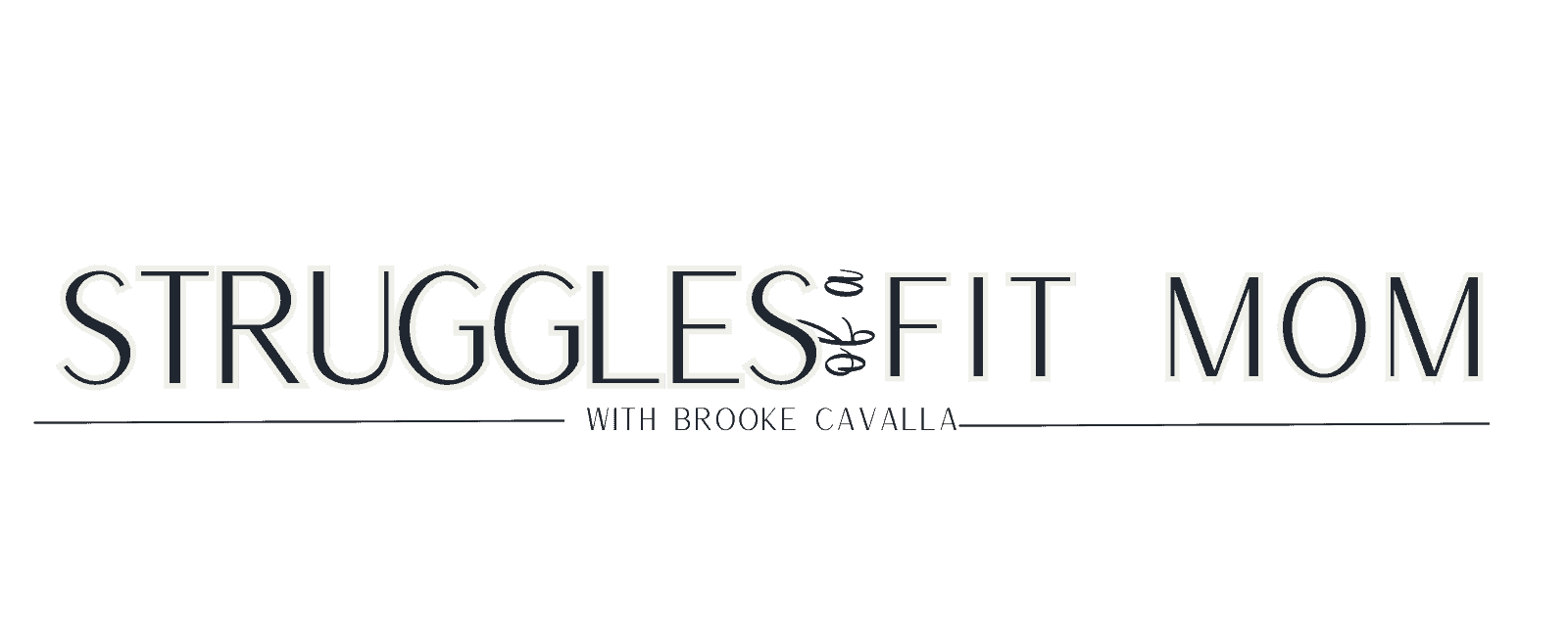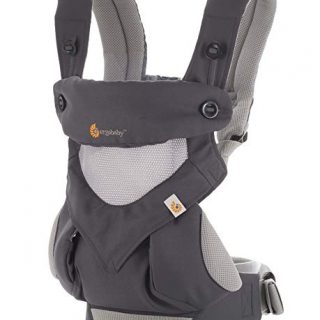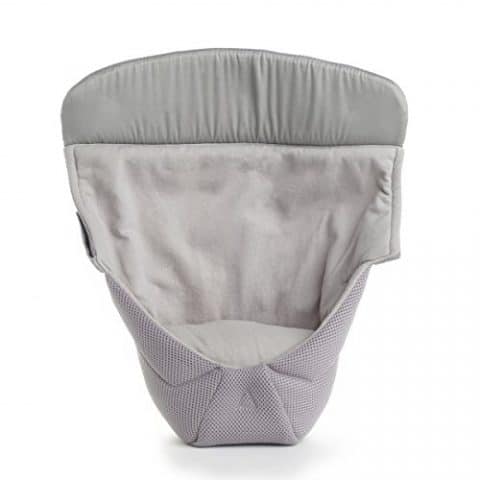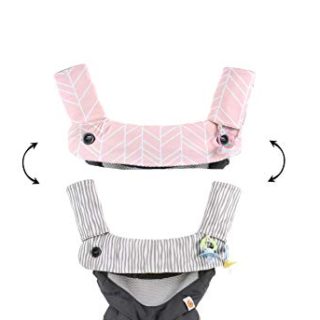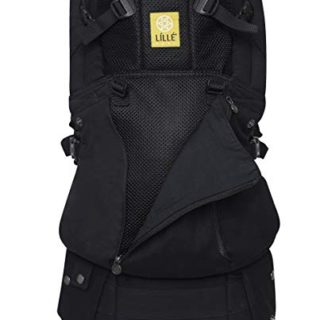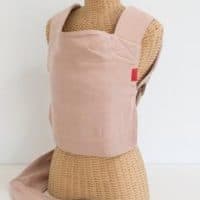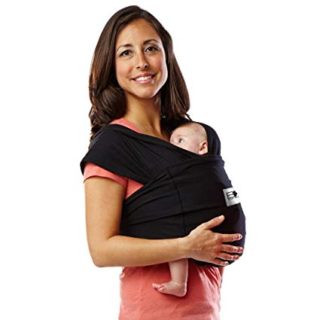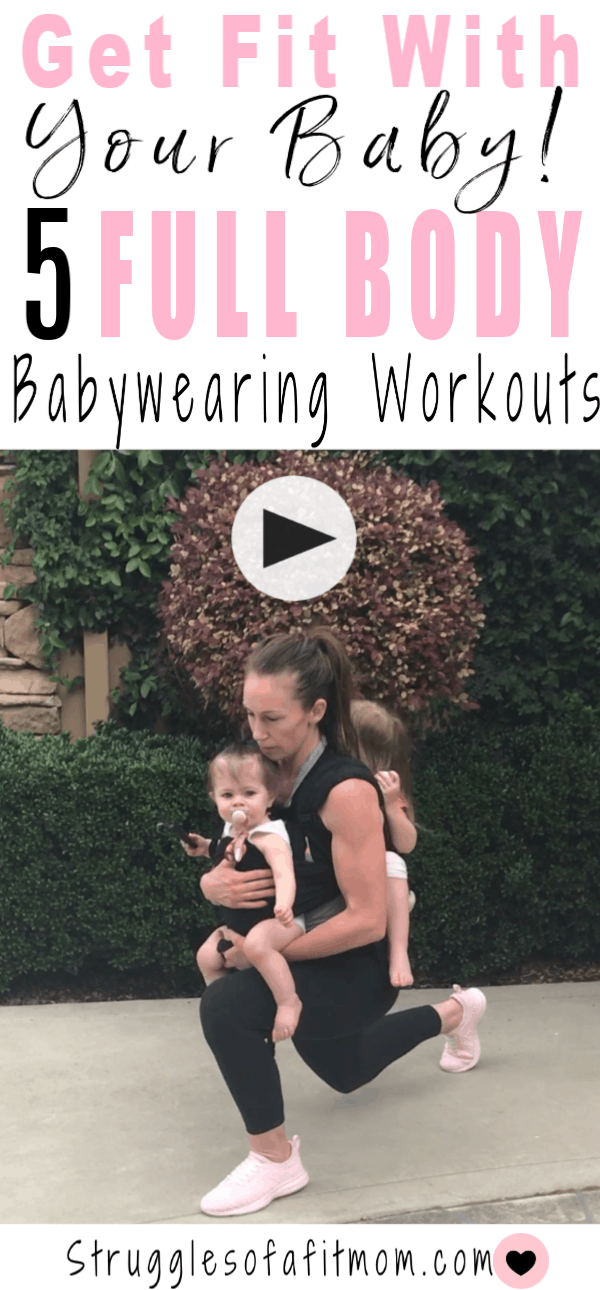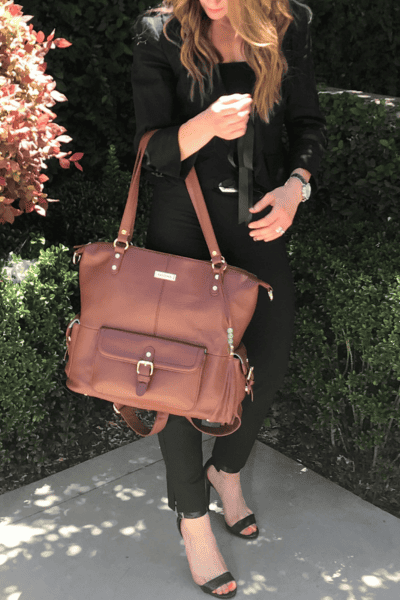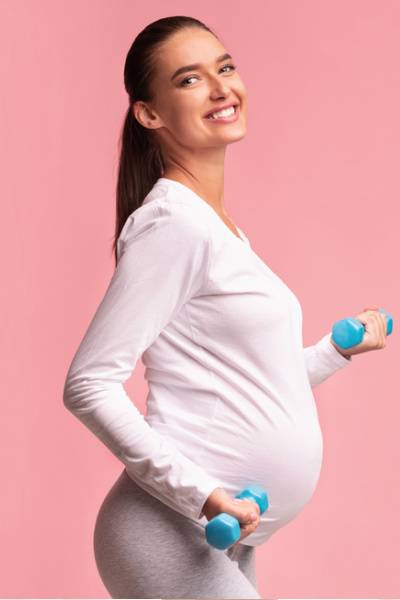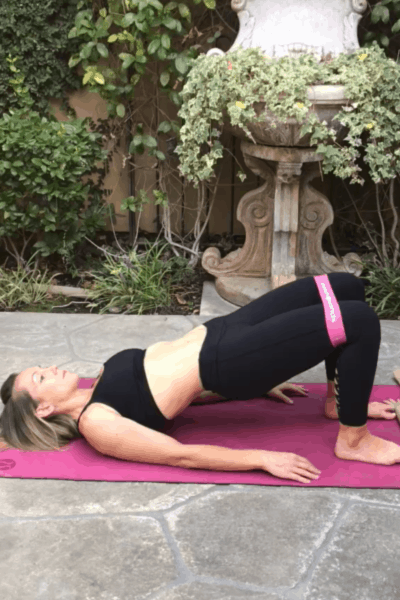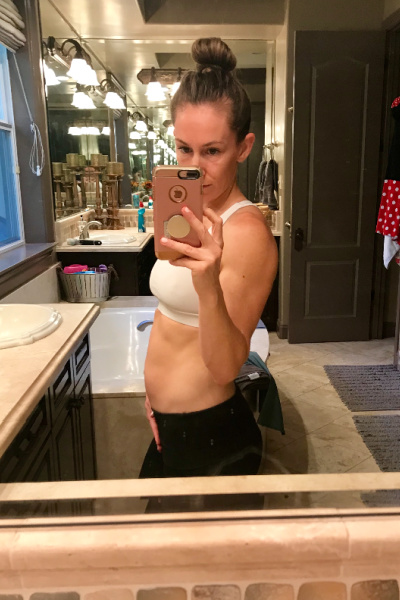6 Beginner Babywearing Exercises To Get You Fit
We all know baby wearing can be a lifesaver to get things done around the house or while out running errands.
But can it really help you shed unwanted weight, tone your body, boost mood and gain some energy?
You betcha!
The transition to motherhood can be a tricky one.
You are swooning over your little bundle of joy yet there are things you want and need to get done, like exercise.
As a mom of three under four, I know first hand the struggle of wanting to workout but it seems like every time you get into a rhythm, your baby wants to be held.
This is exactly why baby wearing exercises will help you feel so much better!
I see it like this, if you have a baby strapped to your body, there isn’t much sitting thats going on.
So you might as well get your body moving with some safe baby wearing workouts.
I will admit, exercising with a baby strapped to your body is not exactly ideal. It can be hot, and there are limitations to what you can do.
However, my Moto is, “something is always better than nothing!”
As moms, sometimes we gotta do what we gotta do, right?
Low impact workouts that include your baby are a great way to:
- stay active
- lose weight
- boost energy
- release stress
- help you feel stronger and more confident in your postpartum body.
In this post you will learn:
- Some benefits of babywearing
- Safely considerations when babywearing for both mom and baby
- Appropriate ages for babywearing workouts
- How to wear your baby safely
- How to protect your back
- My favorite carriers for babywearing workouts
Benefits of exercising with your baby
1. Calms a fussy baby
Babies in the 4th trimester (period after birth) want to be held a lot. Using a carrier can help them have an easier transition to this big world by allowing you to hold them close and simulate the movement they are used to from being in your belly.
My second baby cried A LOT. She had severe reflux and needed to be upright and comforted all day, everyday for seven months.
I found that the movement during my workouts actually helped soothe her.
2. Improve mood, boost energy and feel more confident
Not only do newborns have a hard time adjusting to the big world around them, you may also have a hard time adjusting to your new postpartum body and lifestyle.
Baby wearing workouts can not only help you shed unwanted baby weight but it can also help you boost energy and release any stress or tension you may be feeling.
3. Reduces mom guilt
One of the number one reasons I hear moms say they don’t exercise is because they lack time. They feel guilty taking any time they do have away from their little ones to do something for themselves.
Wearing your baby during your workouts will help reduce mom guilty because they will be snuggled up close to you.
4. Increases bonding
Light exercise while babywearing is an excellent way to bond with your baby, especially during the newborn phase.
You can talk and sing to them which also helps their brains develop.
5. Teaches kids early on the importance of staying active and healthy
One of my favorite benefits of wearing your baby while exercising is that it teaches your little ones early on the importance of staying active.
All my kids have seen me exercise from newborns. They see the importance of taking care of their bodies through my actions of taking care of mine.
This makes squeezing in home workouts much easier because they know that when mommy is exercising, they can either join or do an activity to keep them occupied until I am done.
Safety considerations while babywearing
Every baby carrier is different and will have their own set of safety recommendations but here are some general babywearing safety tips.
The most important things to remember are to make sure your baby’s airway is open and their neck and back are supported.
I suggest checking your baby’s breathing and position often.
When exercising with a baby, you also want to make sure the carrier isn’t placing extra strain on your back and shoulders.
Following these steps will help ensure your baby’s safety and yours.
There are a few acronyms that are used in the babywearing world to make ensure the safety of your little one.
The K.I.S.S.E.S checklist:
K: Kissable
Your baby should be close enough to kiss. You want them positioned on you chest, not around your belly. Having your baby too low not only makes it difficult to see your baby but it will also strain your lower back and shoulders.
I: In View
Your baby’s face should be visible at all times so you can monitor their breathing and mood. There should be no fabric over their face.
S: Supported back and neck
When exercising or moving with your baby in a carrier, make sure their head and neck is secure.
This can be done with the carrier itself or also placing one hand on the back of the babies head while performing certain movements.
Make sure your baby is in an upright position with their tummy and chest securely pressed against you.
Their back should be supported in a neutral position.
The carrier should be tight enough so that there is no gap between you and your baby but loose enough that you can slide your hand into the carrier.
Infants should not be carried in the outward facing position until they have complete control of their heads.
However, make sure you review the baby carrier position guidelines as each carrier may slightly vary.
S: Supported hips
Your babies legs should be positioned like a frog with their knees higher than their bottoms. In the newborn days, they may prefer to have their legs tucked in and against your body like the fetal position.
You never want your babies legs to be dangling straight down as this can cause hip dysplasia. (Source)
E: Easy to breath
Your baby’s chin should be off of their chest so they can breathe normally.
There should never be anything covering their face.
You can also tip their chin slightly up and turn their head to the side. The carrier should be tight enough to support them in this position but you may also place a hand on the back of their head during certain movements to provide more support.
S: Snug
You want your baby to be snug against your body but not so tight that it cuts off airflow or circulation.
Not only will the snug fit help to make sure your baby is safe but it will also prevent strain on your back and shoulders.
Is Exercising while Babywearing Safe?
As always, I recommend checking with your health care provider before starting any postpartum exercise routine, with or without your baby.
If you get the green light to begin exercising, low impact workouts that include your baby are a great way to get moving.
I suggest avoiding high impact exercises like running, jumping or quick movements that may jerk your baby around too much.
One thing to keep in mind is that babywearing does place extra pressure on your core and pelvic floor.
The most important thing to keep in mind when wearing your baby during exercise is to listen to your body.
If you feel any pain in your pelvis or back, heaviness or bulging in the vagina or increase in incontinence, then I suggest focusing on building strength and function in your core and pelvic floor with exercises like these.
Related: Everything You Need to Know About Training Your Core Postpartum
What ages can you wear your baby while exercising?
With the right carrier, you can start as soon as your cleared by your doctor and your body feels ready.
Trust me, wearing your baby in a carrier is a workout in itself so you want to make sure your body feels ready.
I suggest reading the manufacturer’s recommendations for appropriate weight limits of your carrier and follow the guidelines above and carrier specific guidelines before wearing your baby during exercises.
Personally, I began exercising with my babies around 6-8 weeks.
I started with light weight lifting and walking until I felt strong enough to start adding more variety.
Related: 5 Beginner Babywearing Exercises to Help Shed Unwanted Baby Weight
“Babywearing hurts my back and neck!”
Keep in mind that baby wearing is a workout in itself!
I suggest giving extra attention to strengthening your core, back and glutes to help prevent pain or discomfort from wearing your baby, exercising or not.
Exercises to Help Reduce Neck and Back Pain From Babywearing
My favorite carriers for babywearing workouts
Ergobaby Easy Snug Infant Insert
This is great for to use with your newborn.
Premium Drool and Teething Reversible Cotton Pad
These are a lifesaver and super cute!
Salt | Scout
Baby K’tan Original Baby Wrap Carrier
5 Super Fun Babywearing Exercises to Help Tone Your Body
Before beginning any exercises while babywearing, make sure you have assessed the strength of your core and pelvic floor.
Here are my favorite exercise that I religiously include in my workouts.
The best part is that they can be done alone or as a warm up to other exercise routines.
Perform each exercise for 30-45 seconds with 15-20 seconds rest.
Continue in a circuit for 20 minutes.
1. Plie Pulse Squats
The pulse squat is an excellent way to take your squats to the next level.
The bouncing movement from the pulses also helped to sooth my babies.
Before starting the pulse squat, make sure you feel you can do a single squat correctly.
- When wearing your baby, start with your feet slightly wider than hip width.
- Contract your core and pelvic floor
- Slowly inhale and lower yourself into a squat position, relaxing your pelvic floor
- Connect your pelvic floor and core by drawing up through you pelvis as if you were sipping something through a straw in your vagina. Are you blushing yet?
- Continue to keep your pelvic floor activated and exhale as you stand.
- You can add as many pulses before standing up as you want to continue challenging yourself!
2. Reverse Lunges
Muscles worked: Glutes, quads
Reverse lunges are a great postpartum exercise because they are slightly more pelvic floor friendly than walking lunges.
The backward momentum keeps the body in alignment and takes some of the pressure off you knees.
- Begin with you feet shoulder width apart
- Inhale and carefully take a big step back with your right foot.
- As you plant your foot, bend both knees to approximately 90-degress with your weight evenly distributed between both legs.
- As you exhale, push through your left foot to bring your right foot back to the starting position
- Repeat on the opposite leg
You can compete all reps on one side before switching to the next side or alternate back and forth.
Just like the squat, make sure you connect your pelvic floor and core.
3. Bicep Curl and Press
Muscles worked: Biceps, shoulders and core for stability
- Begin with your feet shoulder width apart with a dumbbell in each hand
- You can do this exercise with your palms facing out or in a hammer curl position
- Begin the bicep cure portion of the exercise by bending your elbows to bring the weights to your shoulders.
- Connect and stabilize your core and continue pushing the weights upward.
- Straighten your arms above you to perform the overhead press.
- Bend your elbows to bring the weights back down to the bicep curl and straighten your arms to the starting position.
- An important element of this exercise is keeping your core engaged.
Note: If you feel any bulging of your core or pain in your low back as you reach you arms up, then I suggest waiting until you have established better core connection before performing the press portion of the exercise.
4. Wall Squat Shoulder press
This one will really challenge your core and strengthen your pelvic floor…if it is ready! I suggest beginning this exercise without weights. Simply perform the shoulder press without weight and focus on keeping your core and pelvic floor engaged.
Once you feel good support and connection in your pelvic floor, you can start adding weights.
- Begin by placing your back against a wall and lower your body into a squat position.
- Exhale and focus on pulling your pelvic floor up.
- Once in the wall squat position, bring your hands or dumbbells to your shoulders to create what I call “goal posts” with your arms.
- Slowly press the weights up over your head, straightening your arms.
- Focus hard on maintaining core and pelvic floor activation. You should not feel and bulging in your belly or pressure on your pelvic floor.
- If you cannot feel your pelvic floor and core activate, begin this exercise without babywearing but continue practicing until you can find the activation.
- Begin by holding the wall squat for 10-12 shoulder presses.
5. Lateral band walks
Lateral band walks are a phenomenal exercise to improve hip stability and strengthen your glutes.
Poor glute and core strength can cause back pain, especially when babywearing. (Source)
- Start by carfully placing a loop band around your lower legs. For easier movement, place the band closer to your knees. For more challenging movement, place the band around your ankles.
- Place your feet shoulder width apart with knees and hips slightly bent in a half squat position. Engage your core and pelvic floor.
- Staying low, begin by taking a lateral step with your right foot. Focus on pushing off your left foot to initiate the movement.
- Slowly bring the right leg back to your starting position and continue walking in the lateral direction for desired reps before switching to the opposite side.
Mommyhood can be a struggle, but working out and taking care of yourself shouldn’t be!
Babywearing is a great way take care of yourself without feeling guilty for taking time from your baby.
As always, I am only one email away from helping you reach your goals or answer any questions. Never hesitate to reach out!
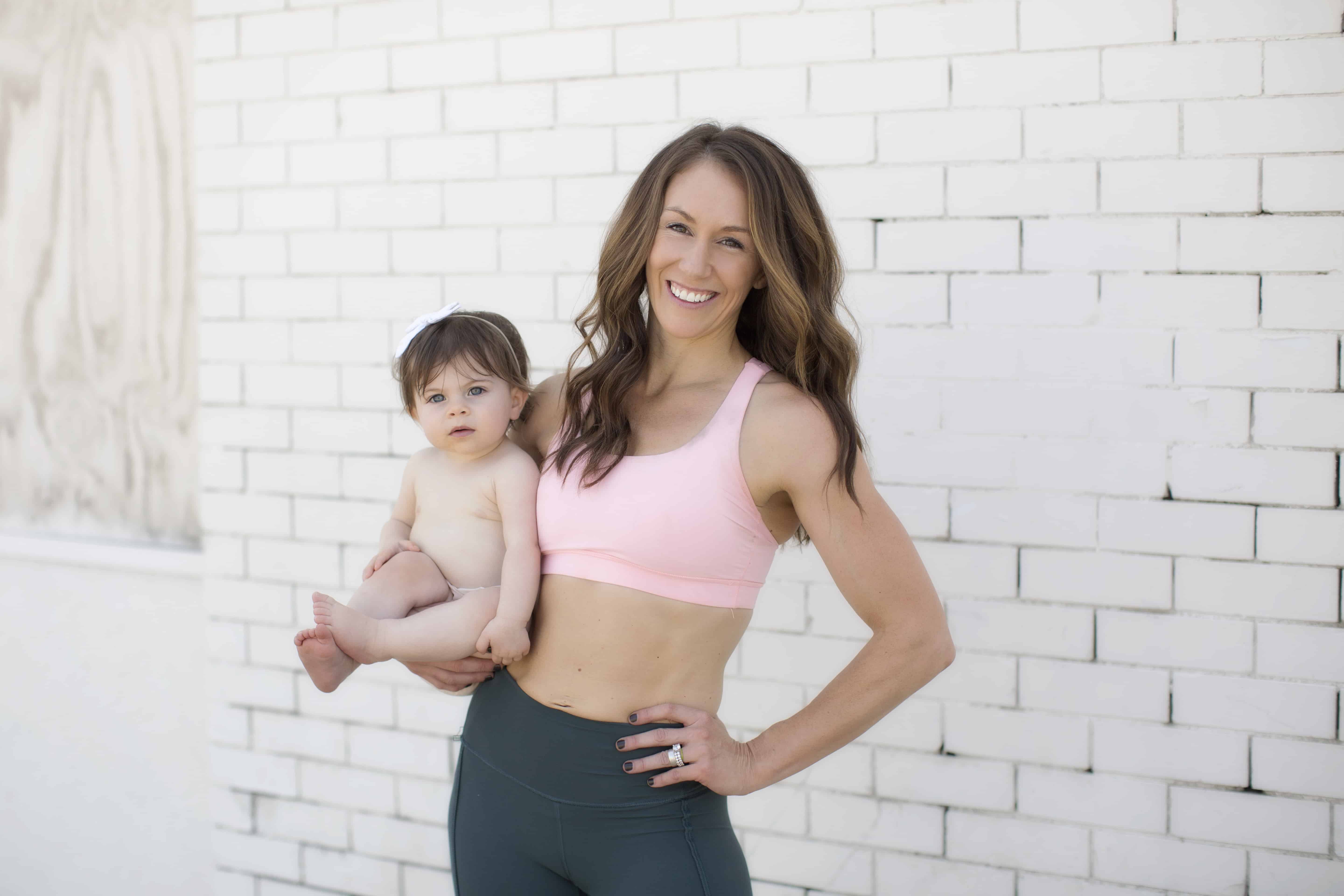
Brooke is a certified Prenatal and Postnatal Exercise Specialist with a Bachelors of Science degree in Kinesiology-Exercise Science. She is also a mom of 3 girls with more than 15 years of experience in health and fitness. Brooke’s goal at Struggles of a Fit Mom is to help motivate, educate and inspire other busy mamas who struggle with finding time, energy and motivation to take care of themselves in the chaos of motherhood.

